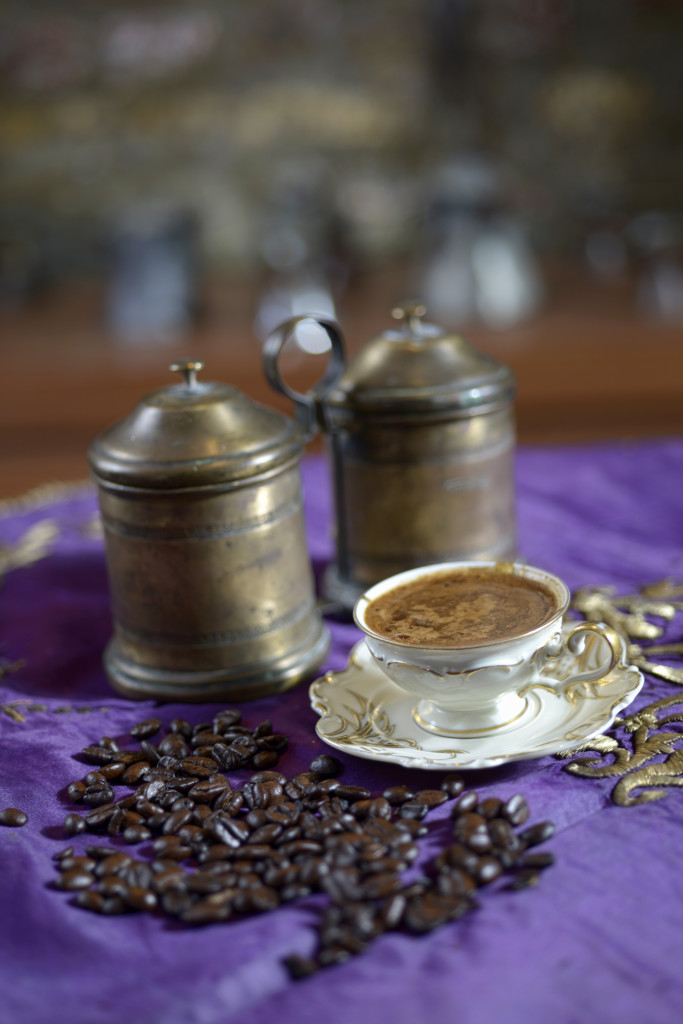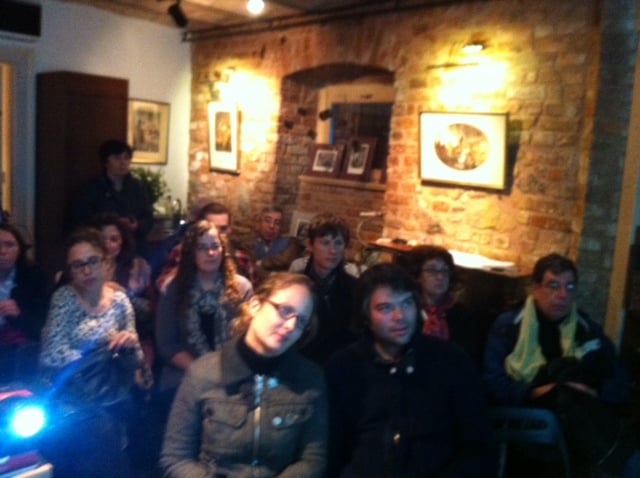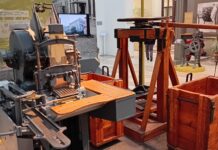 Like many of history’s greatest culinary discoveries, that of coffee stemmed from a noisy, restless goat and his attendant farmer’s desire for an undisturbed night of sleep.
Like many of history’s greatest culinary discoveries, that of coffee stemmed from a noisy, restless goat and his attendant farmer’s desire for an undisturbed night of sleep.
On Tuesday 25 February, Dr. Nihal Bursa, architect, collector of coffee paraphernalia, and overall coffee enthusiast, delivered an enlightening lecture, entitled “Turkish Coffee From Beans to Telve” at Alba Galeri in Beyoğlu. Alba Galeri is currently hosting an exhibition of historical coffee items from all parts of the globe, though the focus is on items related specifically to Turkish coffee.
As Dr. Bursa explained to the group of about 25 attendees, the history of coffee traces back to the aforementioned overcaffeinated goat in Ethiopia, whose bleating kept the goat’s farmer awake all night. The farmer, racked with exhaustion and curiosity, followed his goat and eventually discovered the source – his goat had been chewing leaves from a coffee plant.
From there, the legend grew. As a stimulant, the chewing of coffee leaves was useful for travelers on long journeys, allowing the plant to spread throughout the known world. In Yemen, sufis were among the first to brew liquid coffee and used the beverage to remain awake and alert for all-night prayer sessions, and act as forebears of the modern university student in the midst of finals week. Meanwhile, in Egypt, coffee became ubiquitous aboard trade ships, and it wasn’t long before an industrious Egyptian set up shop along the Nile, establishing the world’s first drıve-thru coffee stand.
The effects were not always pleasant, of course. Dr. Bursa walked her audience through the emergence of coffee houses in the western world, which became notorious as meeting places for political conspirators and led to raids and other forms of interference. Likewise, these houses drew the ire of religious leaders as they removed their followers from regular services. But demand remained high in major metropolitan centers, and it didn’t take long for coffee houses to take root in Turkey.
The opening of the first coffee house in Turkey took place in 1554 in Eminönü, then Istanbul’s heart of trade and commerce, and preceded the opening of other firsts in coffee strongholds such as Vienna and London. Turkey’s coffee culture exploded, as coffee houses could be fit into any unused corner and created meeting places for members of all parts of society. Nearly five centuries later, the social aspect remains integral to the true Turkish coffee experience.
Crafting of Turkish coffee, however, evolved over time to what we see now. Though each individual kahvıcabşır (master craftsman) has added their own twists to the process, the fundamentals tend to remain. After setting the historıcal stage, Dr. Bursa got to the heart of the matter – the brewing of a true cup of Turkish coffee. (The Alba Galeri was kind enough to offer a cup to each of the lecture attendees, heightening the appreciation of, and attention to, this portion of the event.) The process begins, of course, with the selection of beans, typically of the strong, medium-roasted Arabic variety. Next comes the roasting process, done in iron or copper skillets, followed by the cooling period. At this point, the beans are placed in small wooden boxes to be cooled, and several beautiful examples of these are on display as part of the exhibition.
Also on display are several dibekler, or mortars, used for the grinding process. Small mills were eventually introduced for this step, but the choice of tool depended on the importance of the coffee drinker – dibek kahvesi (mortar-ground coffee) was served to important guests, as it tended to taste better. Regardless of the drinker, the beans are always ground to a very fine level, which is essential for the froth and the unique aroma. Storing of unused coffee followed, usually in wooden boxes which offered better protection from moisture than those of brass, copper, or silver. When the time came for brewing, the coffee was heated over a fire in a wide-bodied and thin-necked cezve, which was important for attracting coffee drinkers. It was also common to use an ibrik (ewer) for the brewing process.

The service of Turkish coffee was, and remains, perhaps as significant as the preparation. The elements of service have changed little over the course of its history. Coffee jugs are carried on the wholly unique sitil trays, recognizable by the three chains connected at the carrying handle above and the small coal stove below. Today, most coffe cups, or fincanlar, have handles, making the experience easier for the drinker. In the past, these cups had no handles, allowing them to be passed around a circle and shared amongst friends. They were often placed in small, decorative cup holders – these, of course, were indicative of status based on the incorporated materials and styles. While the cups sprouted a handle over time, they lost a small, perforated piece of metal that was built into the base of the cup which was used to infuse extra elements to the coffee, such as opium. The reading of telve, or the leftover coffee grounds, for the drinker’s fortune is a popular element, though there is little history to tell us of its origins.
It seems that, today, a cup of çay has supplanted a cup of Turkish coffee as the caffeinated beverage of choice. This is due, in part, to the currency crisis that faced the region in the mid-70s and eventually led to an increased popularity in the easier to brew, and cheaper, cup of tea. However, UNESCO named Turkish coffee an item of Intangible Cultural Heritage of Humanity in 2013, and many coffee houses continue to prevail in the face of emerging chains, proving the resilience and importance of Turkish coffee.
Over the course of her lecture, Dr. Bursa wove in countless interesting tidbits and stories, as well as her own history with Turkish coffee. Though she has amassed a large collection of Turkish coffee tools and regalia, she also owns a number of more modern brewing devices, including the Telve, which looks like a regular coffee maker but aims to replicate the aroma, texture, and flavor of a traditionally prepared cup. The result was a discussion of an inimitable Turkish institution and its history and place in the culture.
The Alba Galeri exhibition contains many fine examples of the tools used in the brewing, serving, and consuming processes, while offering useful information for any coffee enthusiast. The exhibition runs until March 10, and recommended visiting times are between 9:30 am – 6:00 pm Tuesday through Saturday.
Paul Griebel is a contributor to Yabangee











[…] even makes boring online dates better. Spend the month tracking down your favorite salep (or boza, Türk kahvesi, çay, sıcak çikolata, sıcak şarap). Do this alone, do this with your significant other, do […]